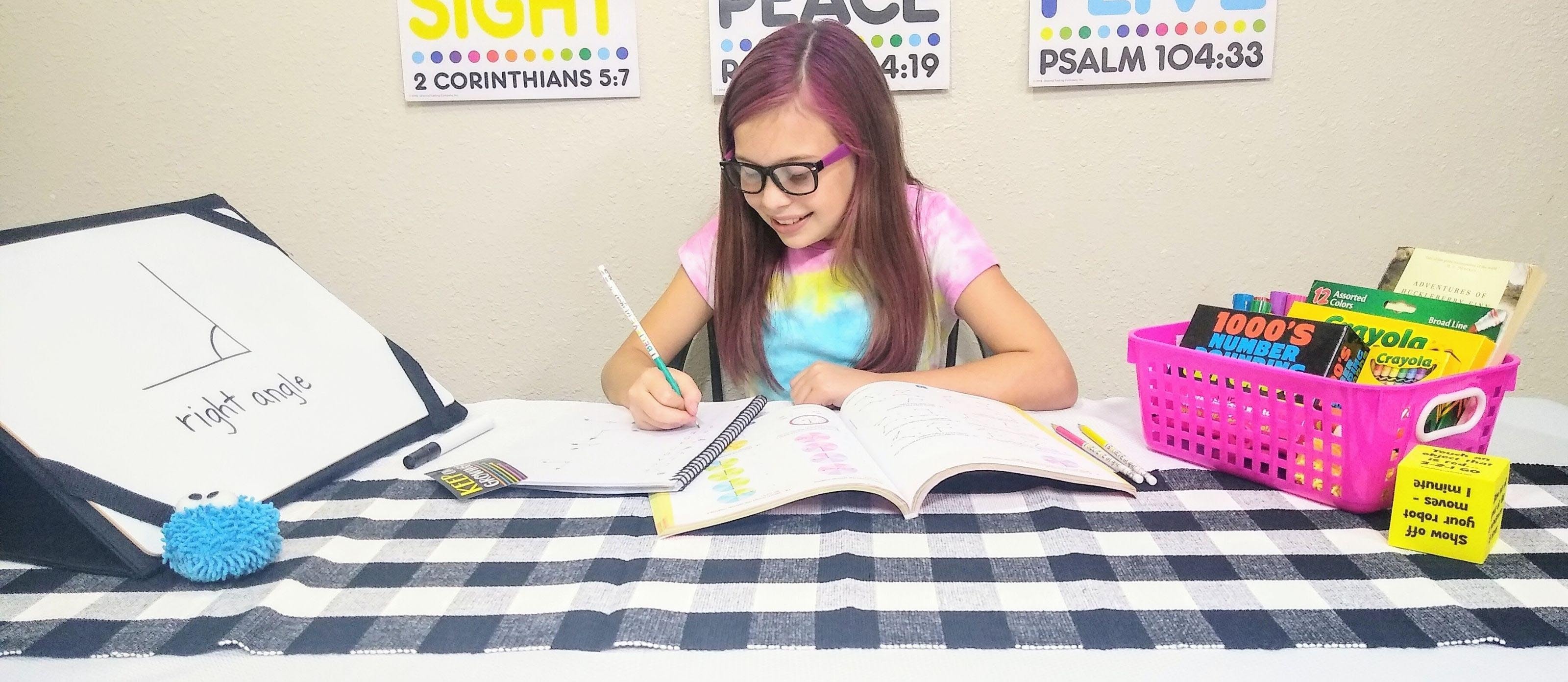Whether you have just decided to start homeschooling or you were thrown into it by circumstances, congratulations! You are about to embark on an amazing journey with your child and you have what it takes to make it a great year! As a first-time homeschooler, you may find yourself asking the same questions as many others. How do I start homeschooling my child? What homeschool curriculum do I choose? How do I make sure my child is learning? Let me put your mind at ease by sharing the simple things I did to start homeschooling.
Know Your State's Homeschool Laws
First and foremost, it's important to know your state's homeschool laws. Homeschool laws and regulations vary from state to state, so understanding your state's laws is important. Once you've familiarized yourself with these laws, it easier to plan and set goals for your child's education plan. Are there time requirements for your state regarding how many hours a day or year your child must be learning? Will you need to submit reports or lesson plans? Will your child need to take a standardized test? Click here and select your state to see your homeschooling laws and requirements.
Connect With Other Homeschool Families
Connecting with other homeschool families is a great way for you to familiarize yourself with the process, ask questions, and learn from other people's experiences. You can take on the homeschool journey together and your child will have peers to hang out with!
Co-ops can also be a great advantage for homeschooling families. They offer lessons, group work, and information about activities like sports, clubs, group projects, and field trips. Co-ops seek to help lighten-the-load of homeschooling on the families while building enriching relationships. Each co-op has its own culture, so research ones near you to see if they are a good fit.
Choose a Homeschool Curriculum
A homeschool curriculum is not a one size fits all solution, which some parents and teachers love. There are several different styles of homeschooling and each of their approaches to curriculum and teaching is different. The most common homeschool styles are: School-at-Home, Unschooling, Classical, Montessori, Waldorf, Charlotte Mason, Eclectic, Unit Studies, and Online Homeschooling. Before you look at any curriculum, it's important to know what homeschool style you want. Homeschool style is a way of life for homeschoolers and can be the difference between a successful year or a stressful one.
These are some things to ask yourself before you decide on a homeschool style. Why am homeschooling my child? What are my own strengths and weaknesses? What do I want from a curriculum? What is my child's learning style? What are my child's interests? What is my budget? What are some homeschool priorities and goals?
Now you're ready to dive into choosing a homeschool style and curriculum. For time's sake, I will leave it up to you to research each style and figure out which works best for your family. When you find the homeschool style that is a good match, choose the curriculum that corresponds with that style. If there isn't a specific curriculum, you'll have to do a little more research about that style.
Depending on your curriculum choice, you will also want to familiarize yourself with the common core standards. Common core standards are a set of academic standards for math and English language arts that outline what a student should know by the end of each grade level. These standards are great for setting age-appropriate goals. Although most homeschool curricula align with these standards, a few do not. As a homeschool parent, it's your responsibility to know if the standards are required by your state and will be met using your chosen curriculum.
Since unschooling is becoming increasingly popular, and there are so many ways to do it, here's a quick summary. Unschooling is child-led learning. The child's interests and curiosity drive them while the parent provides opportunities for information and experiences in those areas to facilitate richer learning. Although unschooling can be sporadic, time-consuming, and leave knowledge gaps in core subjects, it gives your child autonomy over their education.
Remember that each homeschool family is unique, and many homeschooling families combine styles, so don't feel like you have to put all of your eggs in one basket. I don't fit into just one homeschooling style and that's OK. You can't go wrong with choosing what is best for your family.
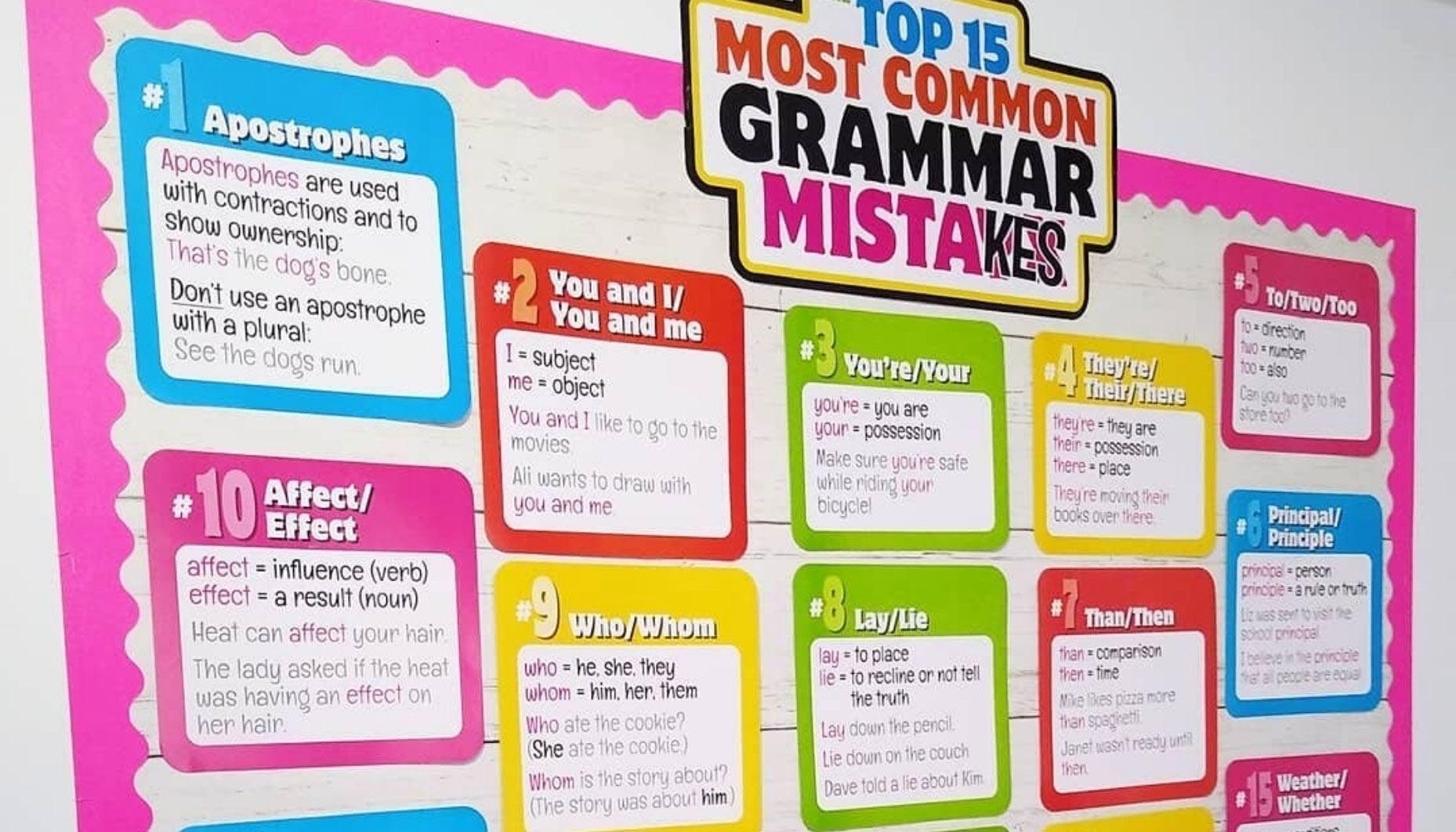
Increase Your Child's Curiosity and Engagement
Regardless of the homeschool style or curriculum choice, we all want our child's learning experience to be engaging and fun. I buy additional products and resources that enhance my curriculum to increase my kids' curiosity and engagement. These are my children's favorite part of their lessons! They allow my children to expand their learning in a hands-on way. Some of my favorite items for this school year are the 1000s Number Rounding Clip Cards, Common Grammar Mistakes Mini Bulletin Board Set, Unifix Reading Phonics Kit, Classroom Brain Break Activity Dice, and a Kindergarten Science At-Home Learning Kit. Here's a full list of the helpful homeschooling products I added to my curriculum this year.
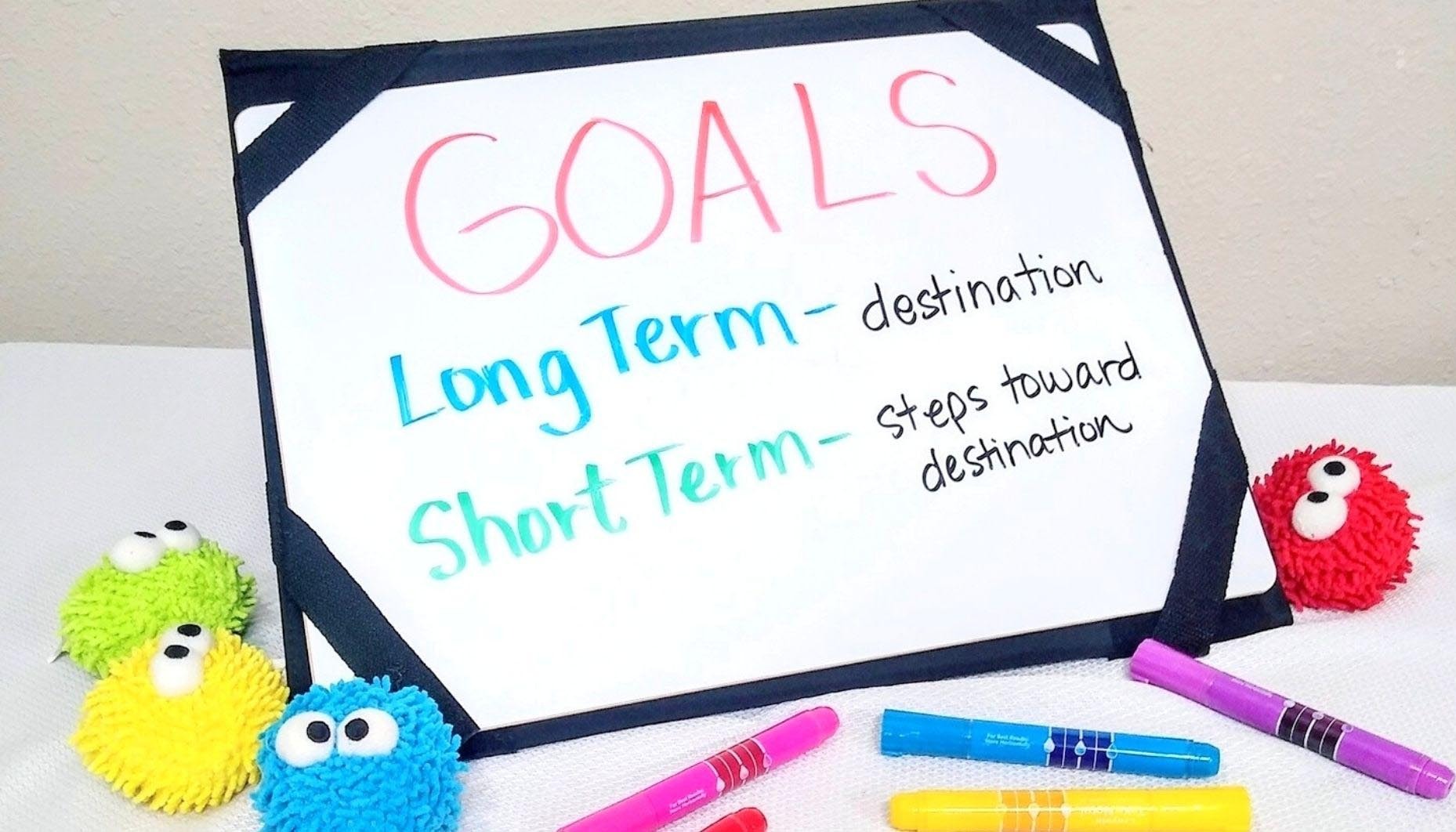
Set Achievable Goals
Now you can start setting achievable goals for your homeschool journey. Goals should focus on learning, life skills, and behavior. It's important to include your child in the goal making process. Not only is this a learning experience, but they can voice their goals and expectations for the year as well.
Let's start with long-term goals. Your long-term academic goals should align with the curriculum, when relevant, each quarter, semester, and at the end of the school year. Sticking to the common core standards can helpful here. These goals could be anything from mastering a common core standard, doing four science experiments a month, increasing a grade average, or meeting expectations for standardized test scores.
Life skill goals are individualistic and will look different for each family. Keep in mind that you will be making smaller short-term goals to reach these long-term goals. A few examples are making sure your child can cook a full meal, mastering personal hygiene, correctly doing laundry, or making a successful budget.
Behavioral goals are also unique to each child and family. These goals are good to discuss with your child so you both can come up with attainable goals together. One goal may be to sit through a 30-minute lesson using self-control, while another could be completing a lesson without checking their phone. These long-term behavioral goals may change as the year progresses and routines set in. Behavior charts are a great way to visually show expectations as well.
Once you've determined your long-term goals, you can create smaller goals. Start out by setting weekly goals. Setting more frequent, short-term goals will inspire you and your child to continue the momentum toward the long-term goals, even when things get difficult. Here are examples of some short-term goals: completing chapter 1 by Friday, do one science experiment this week, help cook a dish, or earn three stars on your behavior chart.
Next, break your short-term goals down into daily goals. Daily goals are more like tasks to be completed. A few examples of daily goals are to write a paper, get ready by themselves, or use self-control during storytime. Within these short-term goals, you begin to see your child's strengths and weaknesses. Use these daily goals to check your child's progress and adjust future goals.
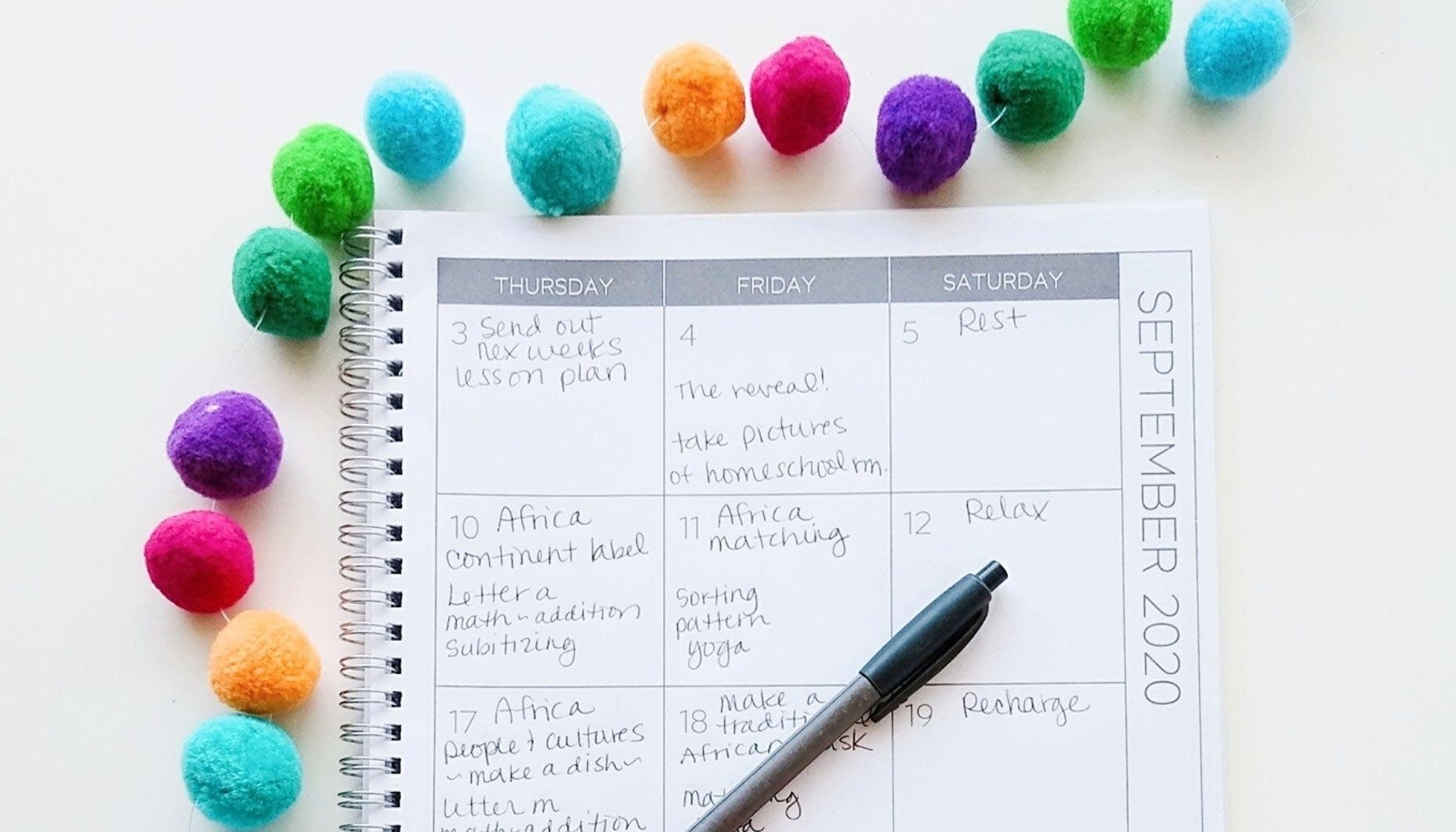
Make an Action Plan
A plan of action is the map of your homeschool year. It outlines the actions or steps you will need to meet your goals. When you put those steps on a timeline, you will have a full picture of where you started, where you want to end, and the progress needed in between. The most effective way to do this is by writing the steps and goals down in a monthly planner. You can choose a simple monthly planner or a dedicated teacher planner for more features. I like the teacher planner because I homeschool multiple children, and I am a detailed planner.
First, plan out your long-term goals for the year. Include dates and events that are not expected to change, like standardized testing days, holidays, and the last day of school. Next, build on that outline by writing your short-term goals for the first few weeks. Focus on how you want to distribute subjects, time, and activities. Then, create a simple daily schedule from those goals. Do not plan too far ahead or you'll find yourself doing a lot of erasing.
Allow yourself time and flexibility to figure out what works and what doesn't work for your family. You may spend the first few weeks planning and replanning as you get into a rhythm together. Homeschool planning is no small task, but the advantages of planning are rewarding! Your child will have a clear understanding of the expectations when they see the schedule, due dates, and goals. That means less stress for you all!
Record Your Child's Progress
Now that you have goals and an action plan, you need to record and reward your child's progress! Keeping a record of your child's performance during the year is a great way to documentation their achievements and academic growth. It's also important to have adequate records if you decide to enroll your child in a public school at any point in the future. I suggest compiling a portfolio of their work, saving state standardized tests, or keeping reviews, quizzes, and tests from your curriculum.
I recommend creating a portfolio for your child throughout the school year. A portfolio is a collection of materials that reflect their effort in every subject. Their portfolio could include math pages, writing samples, research papers, workbook pages, experiments, quizzes, projects, or extracurricular works. You should have a good sampling of their achievements in each subject. Keep them in an organized file box or storage bin that you can add to throughout the year.
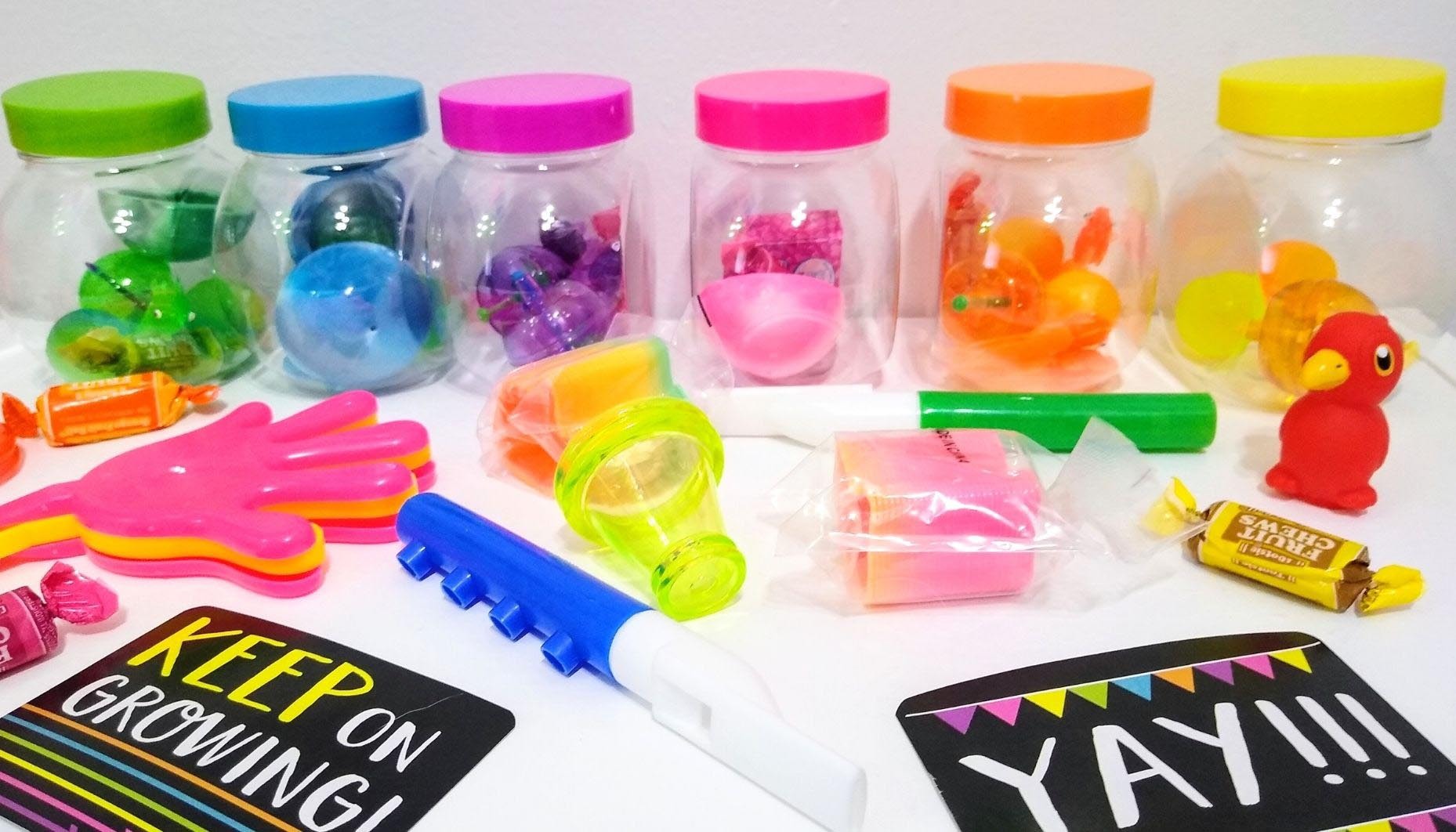
Celebrate Their Achievements
Celebrations act as positive reinforcement in your child's learning journey. As your child reaches their short-term goals, celebrate with a certificate of completion, a prize, or let them choose a toy from a fun treasure chest! Younger children will need to meet goals more often, sometimes several in one day! Even when your child doesn't reach a goal, let them know you're still proud of them and revisit their short-term goals. Encourage them and discuss how you can help them achieve their goals. I like to place Mini Encouragement Cards at their workspace to boost their confidence. This Kindergarten Learning and Incentives Kit is perfect for homeschooling! You can also use Growth Mindset Posters for a bigger visual reminder that they can do hard things!
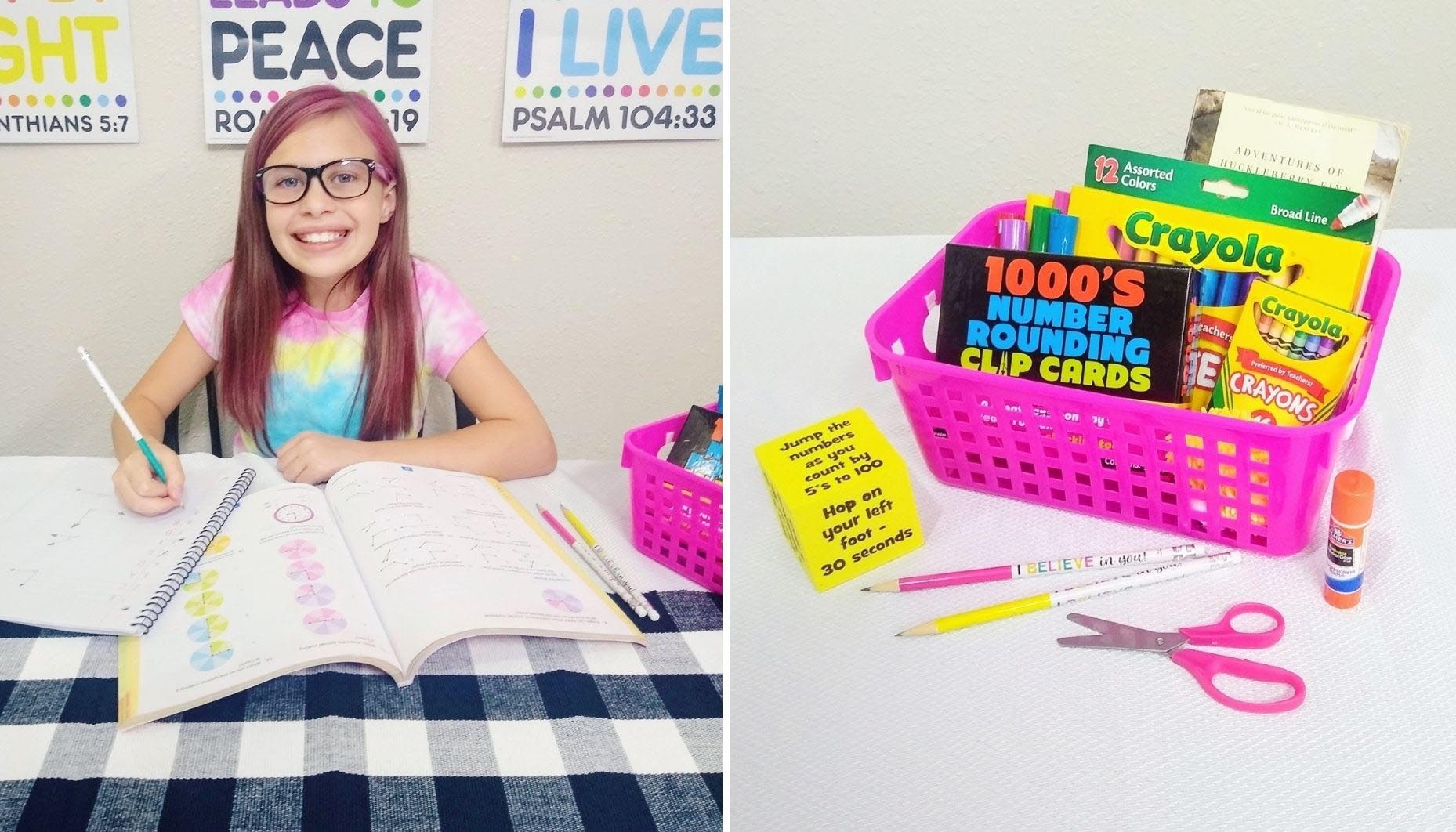
Choose or Create a Homeschool Space
Now you need a homeschool space to carry out your plans. To make the most of your child's learning experience, consider these things when choosing a homeschool space: Is it free from distractions? Do you want posters on the wall? Will you use a computer? Do you have storage cabinets or bookshelves you can use? Can your child learn in more than one space?
When I started homeschooling, my children did their schoolwork in their bedrooms. Their room environment was fun and entertaining, but full of distractions. I found that they were less productive, and their academics were slipping because they weren't able to stay focused. I knew I had to make a change, so I turned our extra room into a homeschool room. I wanted a space specifically for learning, so they could focus on their work. Now they look forward to schoolwork and are productive with their time. See how I set up my homeschool room here.
A homeschool room may work for some families, but you don't need a large space to be an effective homeschooler. Many homeschool families use their dining room table or a coffee table as their school zone. With small spaces that have multiple uses, you'll want to remove distractions and schedule specific schooling time. Smaller spaces are great because they're easy to set up! All you need is a basket or caddy for daily supplies, a whiteboard, and storage bins for everything else. No matter what size your homeschooling space is, you can have a successful homeschool journey!
One last piece of advice is to simply enjoy this homeschool journey with your child. You will grow together and make wonderful memories that you'll cherish for years to come. Your joy and passion for learning will be passed on to them, and they will become joyful learners too! I am so excited for you as you embark on your own homeschool adventure!


